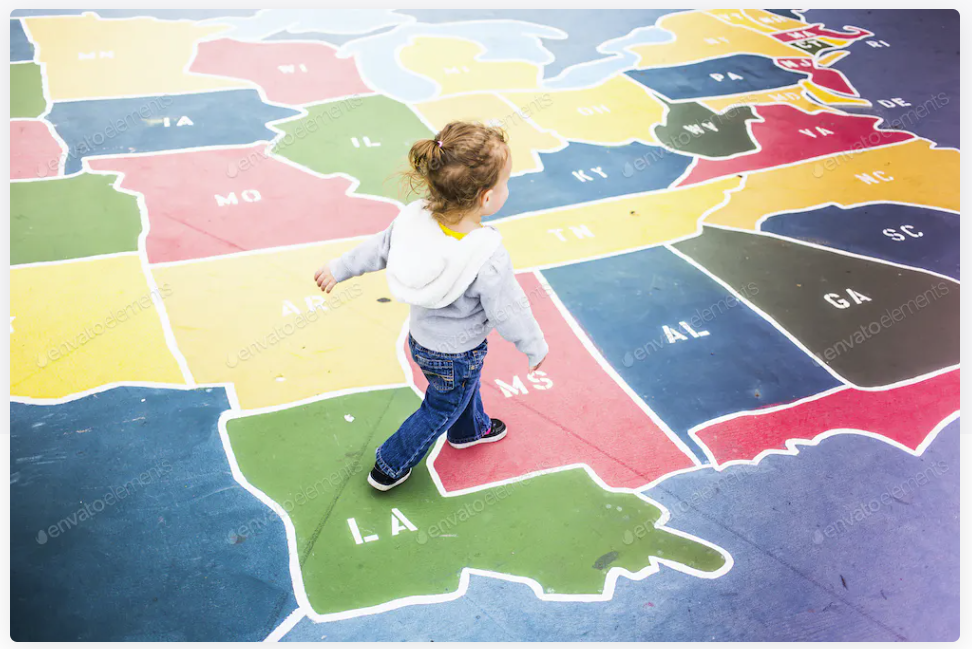.png?width=2240&height=1260&name=Untitled%20design%20(38).png)
Federal Policy Update
Last week, Congress avoided a government shutdown with just hours to spare before the October 1 deadline when federal funding was set to expire. This is a huge relief, as a government shutdown would have temporarily disrupted critical programs that children, families and communities rely on. However, child care and early education programs are not in the clear yet. Congress was able to pass a short-term spending bill, called a continuing resolution or CR, to fund the government through November 17 at the same funding levels as FY23. Although this prevented a shutdown, it is still a temporary solution and only buys a small amount of time before we face the same threat again come November.
Because Congress did not finalize all FY24 spending bills before FY23 funding expired, funding for child care and early education programs for the full FY24 is still not yet secured. In July, the Senate Appropriations Committee approved their Labor, Health and Human Services, Education, and Related Agencies (Labor-HHS) FY24 appropriations bill. Their bill would provide a $1 billion increase for child care programs from FY23, including a $700 million increase for the Child Care and Development Block Grant (CCDBG).
Around the same time, appropriators in the House released their Labor-HHS FY24 appropriations bill, which included a 29% decrease in support for programs under the subcommittee's jurisdiction. The House Appropriations Committee still has not approved their bill.
The child care field is in dire need of continued investments to serve children and families and support providers. It is critical that Congress pass a full-year spending bill that invests in, not cuts, child care.
State Policy Update
The end of September also marked the deadline for states to liquidate over 70% ($37.45 billion) of federal relief funding under the Coronavirus Aid, Relief, and Economic Security (CARES) Act, the Coronavirus Response and Relief Supplemental Appropriations Act (CRRSA), and the stabilization grants funded under the American Rescue Plan (ARP) Act. Some states, like Arizona and Alaska, had already liquidated this funding months ahead of September 2023. With federal funding reaching its scheduled end, states such as Illinois, Kentucky, Massachusetts, Minnesota and New Jersey prioritized and appropriated new state general funds to continue these grants. Wisconsin’s state legislature is currently considering continuing its stabilization grant program with state general funds (more examples can be found in our recent State Session Round Up: Summer 2023).
CCAoA, along with child care resource and referral agencies (CCR&Rs) and other state partners, will be watching data over the coming months to understand the effects of the end of CARES, CRRSA and the ARPA stabilization grant funding. In Kansas, the last stabilization grant payments using ARPA dollars were made in May 2023. Child Care Aware of Kansas is monitoring the number of programs weekly to better understand the change in program supply post-stabilization grants. After several years of declining numbers, the first half of 2023 marked the first time in five years Kansas experienced an increase in supply. This upward trend, however, has reversed since stabilization payments have ended. Child Care Aware of Kansas found that from June 1, 2023, to September 15, 2023, Kansas gained eight child care centers but lost nine. During the same period, Kansas gained 64 family child care and group homes and lost 107, a net loss of 43 family child care programs throughout the state. In comparison, Kansas lost a total of 41 family child care programs over the course of an entire year in 2022-2023.
For future policy determinations, we must also look at data where states have made additional investments to continue pandemic-era policies initially started with relief funding. Massachusetts recently approved $475 million in state dollars to continue its stabilization grant program, which was part of a significant increase to the state’s overall funding for early education and care programs. Recent data from a survey conducted by the state Lead Agency serves as a proof point that the grants have been integral to rebuilding the licensed capacity among all program types and stabilizing program enrollment. As of September 2023, the licensed capacity statewide across all program types surpassed the number of slots available pre-pandemic by 3,113 seats. The steady stream of grants can also be connected to a decrease in educator turnover rates, as over 55% of stabilization grants funds to date have been spent on supporting workforce wages and benefits. Of the 6,806 providers (87% of the state total) that participated in a survey from the state, 982 programs reported they would close their doors if the stabilization grant funding wasn’t continued, a potential loss of 18,000 licensed seats. Stabilization grant funding is making a difference in Massachusetts, and it is crucial we collect this data to understand more about the situation in other states.
Action for Child Care is Critical!
It is clear that when the child system has support, children, families, providers and communities win. Congress must do its part to invest in child care. As federal lawmakers make decisions about funding in the coming weeks, now is the time to urge them to protect and prioritize funding increases for child care.
You can make your voice heard for by:
- Sending a quick email to your lawmaker's office urging them to protect and prioritize child care funding.
- Calling your lawmaker's offices to share the importance of why funding child care matters.
- Sharing our latest graphics to your social media channels using the hashtag #InvestInChildCare.
- Visiting our annual funding hubpage for more resources and ways to connect with your lawmakers.



